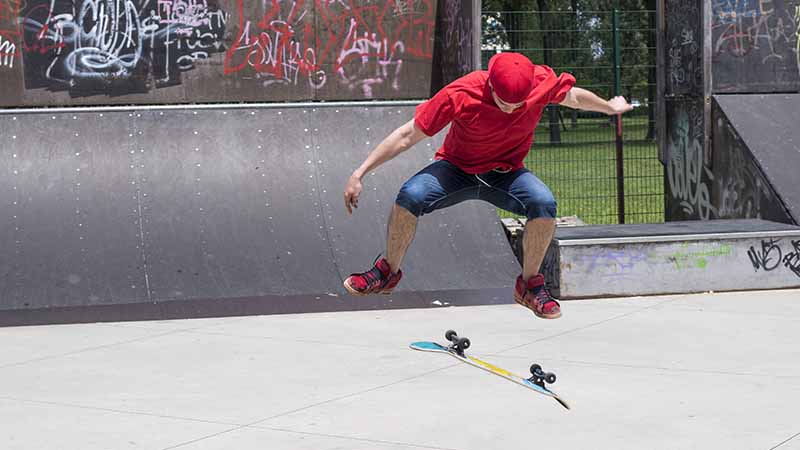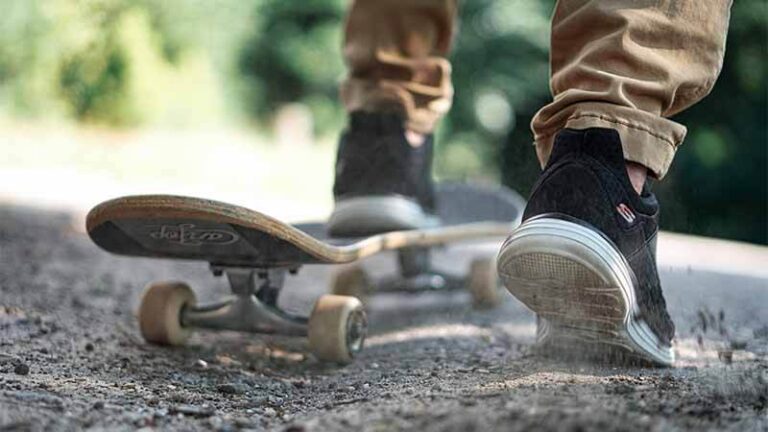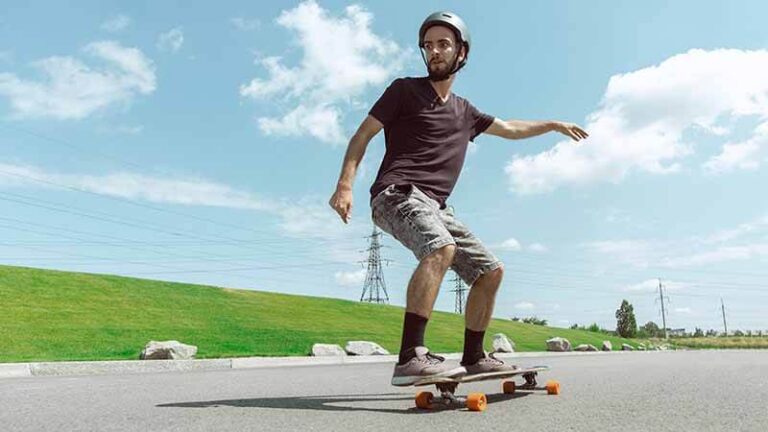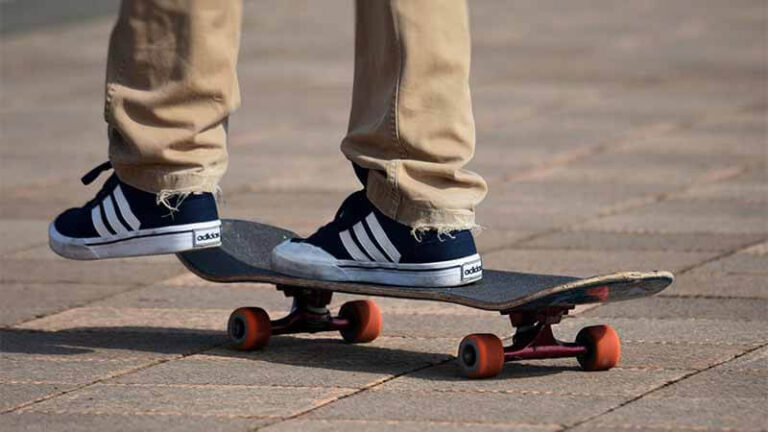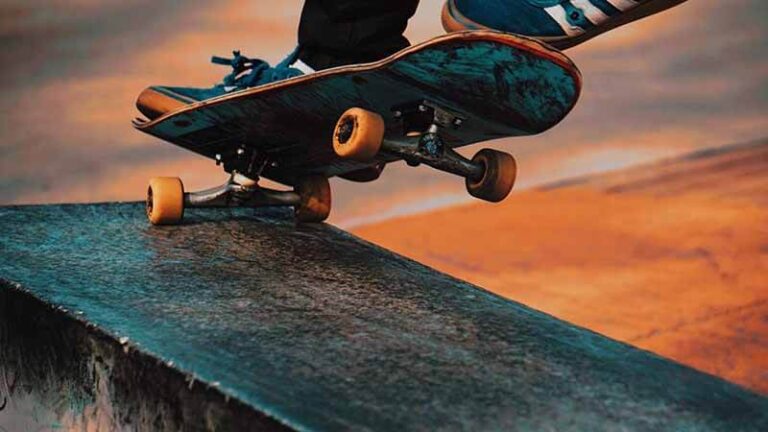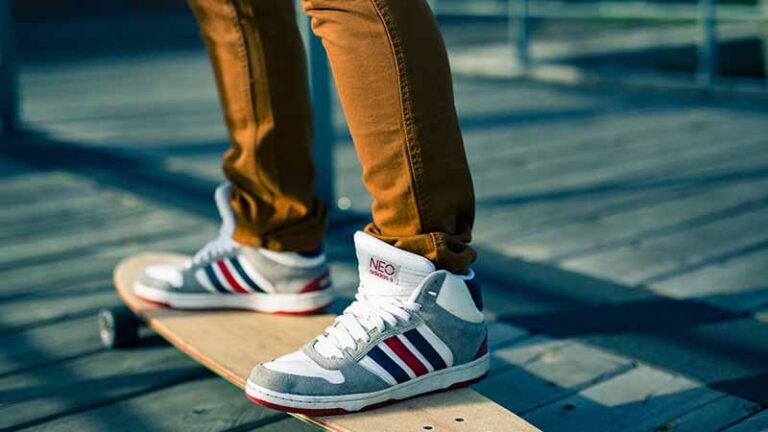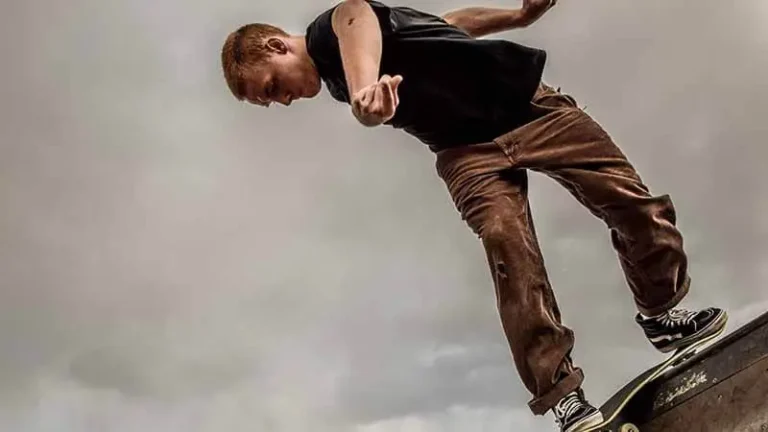How to Ollie on a Skateboard
An Ollie is a basic skateboard trick in which you jump into the air with your skateboard without using your hands or feet to lift it up. It serves as the foundation for many other skateboard tricks and is an essential ability for every skateboarder to master. Ollies enable skateboarders to jump onto and off obstacles, handle challenging terrain, and ride with style and inventiveness.
A skateboard is made up of several fundamental components:
- Deck: The wooden board on which you stand. Decks are available in a variety of sizes, forms, and materials.
- Trucks: The metal components that connect the wheels to the deck. Turning and carving on the board are made possible by trucks.
- Wheels: The round components that enable the board to roll. Wheels are available in a variety of sizes, hardnesses, and forms.
- Bearings: The little metal balls that allow the wheels to rotate.
- Grip tape: The sandpaper-like layer on top of the deck gives your feet a grip.
Knowing the fundamental components of a skateboard is essential for maintaining and modifying your board, as well as comprehending how the board works when riding.
Preparing for Ollie
Choosing the right footwear
When learning to skateboard, it’s important to wear shoes that are comfortable, supportive, and have a good grip. Skateboarding shoes are specifically designed for this purpose, with features like padded collars, reinforced toe caps, and sticky soles. If you don’t have skateboarding shoes, look for shoes with flat soles and good grip, like sneakers or athletic shoes. Avoid wearing sandals, flip-flops, or shoes with slippery soles, as they can increase the risk of injury.
Finding a safe surface to practice on
When first starting out, it’s important to practice in a safe and controlled environment. Look for a flat and level surface, like a driveway, parking lot, or skatepark. Avoid skating on uneven or rough terrain, as it can increase the risk of falls and injury. Make sure the area is free of obstacles and hazards, like rocks, cracks, or debris.
Getting comfortable on the board
Before attempting to ollie or perform other tricks, it’s important to get comfortable riding on the board. This means finding your balance, pushing off with your back foot, and stopping safely. Start by standing on the board with your feet shoulder-width apart, and practice shifting your weight from your toes to your heels. When you’re ready, push off with your back foot and ride in a straight line. To stop, drag your back foot on the ground or use the tail of the board to come to a gradual stop. Practice these basic skills until you feel confident and comfortable on the board.
Learning the Techniques
The basic Ollie motion (pop, slide, jump): An ollie is made up of three movements:
- Pop: With your rear foot, snap the skateboard’s tail down onto the ground, making a “pop” sound.
- Slide: Moving your front foot up toward the board’s nose, causing the board to level out in midair.
- Jump: A jump with both feet that lifts you and the board into the air.
The ollie is created by blending these actions in a flowing motion. The pop creates upward momentum, the slide balances the board, and the leap takes you and the board into the air.
Taking each step down and practicing it individually
It’s helpful to break down each step and practice them separately when learning to ollie. Begin practicing the pop by snapping the board’s tail down onto the ground with your back foot. If you’re comfortable with it, try sliding your front foot up the board in mid-air to level it out. Lastly, practice jumping off the ground with both feet to elevate yourself and the board. By practicing each step separately, you can create muscle memory and a firm basis for the whole ollie.
Putting the steps together to do a full Ollie
If you’re comfortable with each step individually, you may begin combining them to accomplish the entire ollie. Begin by lowering the board’s tail to the ground, then sliding your front foot up towards the board’s nose, leveling it out in midair. Jump with both feet as the board levels out to raise yourself and the board into the air. As you gain confidence with the ollie, try to concentrate on timing and rhythm, keeping the moves smooth and flowing. You’ll be able to ollie higher and with greater control as you practice.
Common Mistakes and How to Avoid Them
Not obtaining enough pop
If you don’t get enough pop, your board won’t rise off the ground, making the ollie impossible to accomplish. To fix this, make sure you’re snapping the board’s tail down onto the ground with adequate force. To generate extra pop, try shifting your weight slightly towards your back foot while popping, and emphasize utilizing a rapid and forceful move.
Failure to properly slide your foot
If you fail to properly slide your foot, the board will not level out in flight, making it impossible to control the ollie. To rectify this, make sure you’re sliding your front foot in a straight path up toward the nose of the board. If you slide your foot too far forward or too far back, the board will spin or tilt. To obtain a feel for the proper technique, try sliding your foot up the board without jumping.
Not jumping high enough
If you don’t jump high enough, you won’t be able to lift yourself and the board into the air, making the ollie difficult. To rectify this, make sure you’re jumping with both feet and lifting yourself off the ground with your legs. To generate greater height, try stooping slightly before jumping and focusing on a rapid and explosive move.
To remedy these errors, it is necessary to break down the ollie into its distinct components and practice each one separately. Concentrate on building your pop, properly sliding your foot, and jumping high enough. Practice each component separately first, then gradually combine them until you can do the whole ollie with control and consistency. It’s also a good idea to record yourself and go over your technique, looking for flaws. You can overcome these errors and master the ollie with practice and determination.
Tips and Tricks for Improvement
Consistent practice
Consistent practice is one of the most critical parts of learning to ollie (or any other skateboarding trick). Setting aside regular practice time each day or week and sticking to a regimen is essential. Even only a few minutes of practice every day can help to strengthen muscle memory and form positive habits. Consistency is essential, so try to incorporate the practice into your daily routine.
Practicing ollies over obstacles
Once you’ve mastered the fundamental ollie, you may begin experimenting with ollies over obstacles. This can range from a fracture in the pavement to a flight of stairs or a railing. You may improve your timing, height, and control by practicing ollies over obstacles. Start small and work your way up to larger obstacles, and always wear protective gear before attempting more difficult tasks.
Experimenting with different foot positions and pressures
When you gain confidence in your ollie, you may begin experimenting with other foot positions and pressures. Experiment with varied angles for your front foot or shifting your weight slightly forward or back. You can also experiment with different types of shoes or alter the pressure of your foot on the board to determine what works best for you. You can continue to polish and enhance your ollie while developing your own particular style by experimenting with different ways.
Conclusion
In conclusion, learning to Ollie is a must-have ability for anyone interested in skateboarding. To summarize, some of the most important things to remember when learning the Ollie are to wear appropriate footwear, find a safe and level practice surface, establish good balance and control on the board, break down the Ollie into its distinct components, and practice consistently. It’s also a good idea to experiment with different foot positions, pressures, and approaches, as well as to push yourself by attempting Ollies over obstacles.
While learning Ollie can be difficult at first, it is critical to continue practicing and experimenting. Through practice and perseverance, you will be able to overcome the frequent faults and accomplish this fundamental skateboarding technique. Remember to take things slowly, focus on creating healthy habits and practices, and stay motivated by setting attainable goals and tracking your progress. Above all, have fun and enjoy your learning adventure with Ollie!
Read More;

